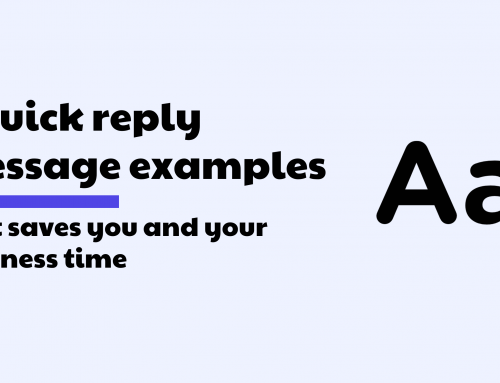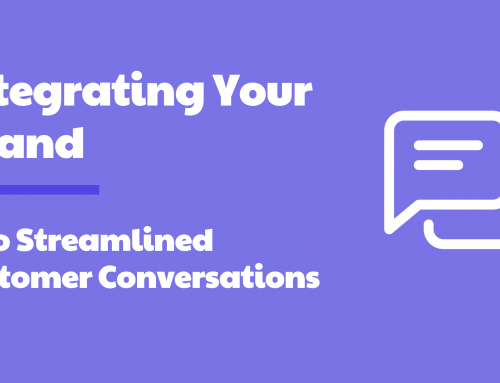Why flow builders ruin the customer experience in messaging automation
Messaging automation is booming. More and more companies scale up their customer conversations using chatbots and automated messaging flows. However, the quality and experiences offered by these chatbots differ heavily, and sometimes ruin the customer experience. Why is this and how to prevent bad automated messaging experiences?
Automated messaging and chatbot experiences that ruin the customer experience
Let’s start with analyzing a typical messaging experience that is created with a DIY flow builder. These flow builders are very helpful to set up automation without any coding or hours of training a chatbot. With a drag-and-drop builder, you can create your own flows and turn them into action.
However, these flow builders work using a very rigid decision tree type of structure. It only allows for closed-ended questions and forces your customers to answer those closed-ended questions. A typical conversation with such a chatbot goes as following:
Hi, I’m Jake and I’m your support bot. Do you have a question about:
- Order status
- Product availability
- Return policy
Return policy
Great, let’s handle your request. Is it about:
- Our return policy
- Status of your return
- Printing a return label
I have ordered a product that is damaged, what to do with it?
Sorry I don’t understand you. Let’s try it again. Is your question about:
- Our return policy
- Status of your return
- Printing a return label
I want to talk to a human.
Looking at the example conversation above, the customer has a very specific question about a damaged item. The chatbot only provides a predefined set of question/answer combinations that doesn’t help the customer. It only frustrates the customer and ruins the whole chatbot experience. These flows feel similar to those caller menus that go like “ Press 1 if you have a question about…, Press 2 if you have a question about…”
Adding more flows to a chatbot isn’t going to solve the issue. It only makes the chatbot flow more complicated and harder to understand. You then create long lists of options to choose from or a ton of steps to take to get to the right answer.
Customers simply want to ask a question and get an answer straight away instead of having to go through a whole flow. They deliberately opened up a conversation with your business instead of using your FAQ or contact form, simply because they expect a quick answer instantly.
How to create better automated messaging experiences?
When building a chatbot, the alternative for using conversation builders is Conversational AI and a technique called NLU (Natural Language Understanding). It’s too much to explain this technology in detail in this article but what it does is that it understands human language. (Learn more about Conversational AI here)
Conversational AI gives flexibility to the conversation and allows a customer to ask open questions. The technology understands what the question is about and knows how to answer. Pretty much how a human-to-human conversation works.
Let’s take the earlier conversation in this article, but then use Conversational AI. The conversation then would look like this:
Hi, I’m Jake and I’m your support bot. How can I help?
I have ordered a product that is damaged, what to do with it?
So sorry that the product has been broken. What’s your order number so we can send you a new one? You can keep the old, broken item.
My order number is 1234567
Got it, we will send a new product right away and that should be delivered in 2 days. Is there anything else I can do?
No, I’m good, thanks.
You’re welcome
The NLU technology understands the incoming message, recognizes the intent of that message and knows that it’s about a product or damaged product. It therefore can reply accordingly and help the customer straight away. It also understands simple phrases like “Hi, Bye or Thanks” to make a conversation more human-like.
Conversational AI works with a sophisticated model that requires training to get smarter and more intelligent. It means that if the chatbot learns new sentences, somebody needs to tell it what to do with it. But also if the chatbot misunderstands particular sentences, it needs to be corrected. This is a day job to do it right. Compare it to raising a child that learns.
Large companies have the resources and the manpower to set up Conversational AI powered chatbots to offer great automated messaging experiences. However, smaller companies are often left with the DIY conversation flow builders that we’ve been discussing in this article. The type of builders that more often than not ruin the customer experience.
Table Duck is a customer conversation automation tool especially designed for small and medium-sized businesses. It uses Conversational AI and NLU to create open, automated conversations that impress customers, but without you doing the hard work of setting up and training the NLU engine.
At Table Duck, we train and optimize the model for you. Just simply select the type of questions you would like to get answered, fill in your answer and go. It’s as easy as that.

